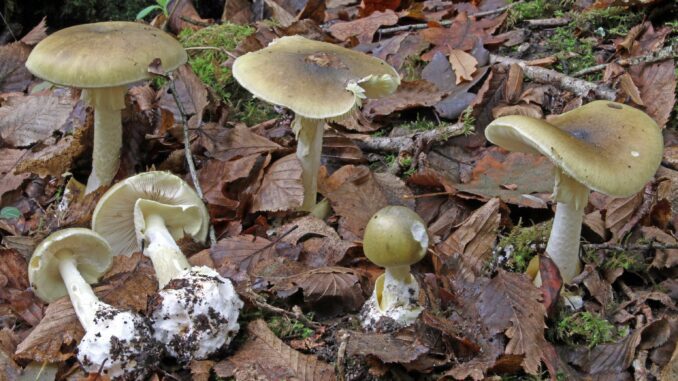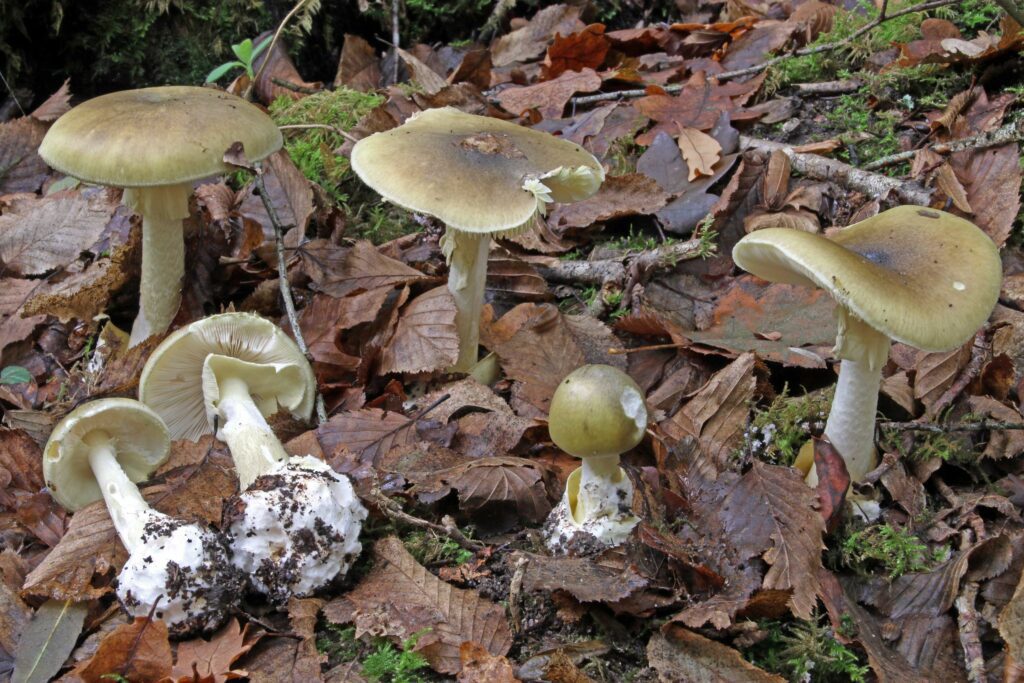
Less known than the famous Fly Agaric (Amanita muscaria), the Death Cap is regularly responsible for poisonings which can be fatal.
What should you know about this deadly fungus?

Can You Survive Eating A Death Cap?
Half of the cap of this mushroom is enough to kill a healthy man. So, if a person eats an entire Death Cap and is not medically taken care of, then there is a good chance that this person will die.
Of course, this mushroom is not referenced on our Mushroom Maps!
Can You Touch A Death Cap?
Yes, you can touch this mushroom without any problem. Poisoning occurs when ingested. There is no problem touching the Death Cap!
What Happens After Eating Death Cap?
First of all, let’s note that the Death Cap has a pleasant taste and smells like roses, so don’t rely on your senses to detect a poisonous mushroom! Indeed, half a cap of this deadly Amanita is enough to kill an adult person.
But what actually happens when a person accidentally eats them? They usually don’t feel any symptoms right away. It is generally necessary to wait from 6 to 24 hours for it to begin to suffer from severe symptoms: abdominal cramps, vomiting and diarrhea.
Meanwhile, the poison destroys the liver. It binds to an enzyme responsible for making new proteins and deactivates it. Without this enzyme, cells cannot function, leading to liver failure. Without proper and timely treatment, the victim can experience rapid organ failure, coma, and death.
How To Identify A Death Cap Mushroom?
When young, it is very similar to edible white species, such as meadow mushroos, for example. When adult, the Death Cap looks like many other mushrooms such as Charcoal burner mushrooms. To properly identify the Death Cap, several criteria are important:
Its Growth Period
Although this is a criterion to be taken with a grain of salt, in the USA, it is more common to encounter this mushroom from the end of summer until the beginning of winter.
The Early Stage
Young specimens look like small eggs wrapped in a protective membrane, which will give the volva, at the base of the stem, when the mushroom blooms.
Cap
At a more advanced stage, the cap measures between 2 and 6 inch in diameter, round and domed at first, then it flattens out over time. The color of its hat varies from greenish-white to olive with brown tones, a little thinning at the edges, especially after rain.
Gills
The gills are tight, white and free.
Stem
The stem is white, mottled with green. A persistent, fragile and membranous ring is present on the stem. At the base of the stem is a sac-like, white, membranous volva. The presence of the volva is an important criterion for this species, and if the fungus is picked, it is important to take the whole stem to check the presence of this volva.
Find Edible Mushrooms With Our Maps!
Want to know where the best mushroom spots are in your state? Explore our Mushroom Maps here! Find the main edible mushrooms thanks to our maps! Have fun!
Leave a Reply